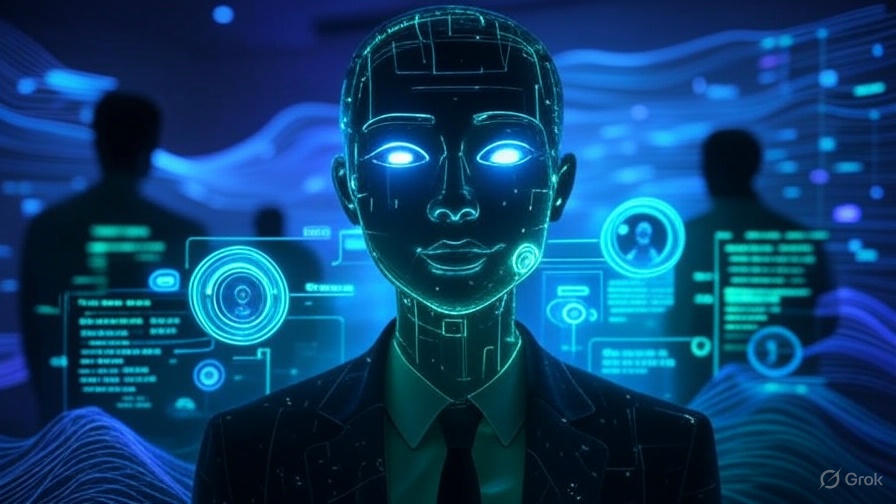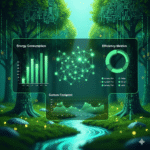AI agents with adaptive emotional intelligence and real-time collaboration are redefining human-machine interaction, bringing a new level of empathy and teamwork to artificial intelligence (AI). These agents detect and respond to emotional cues while collaborating seamlessly with users and other systems, marking a shift toward more human-centric technology. This article provides a critical perspective on the impact of these technologies in 2025, examining their rise, key features, applications, challenges, and future potential.
The Rise of Emotionally Intelligent AI Agents
The development of AI agents with adaptive emotional intelligence and real-time collaboration has surged in 2025, driven by the demand for empathetic and dynamic interactions in a digital-first world. Built on advanced natural language processing (NLP) and multimodal AI, these agents analyze tone, facial expressions, and context to adapt responses. Platforms like xAI’s Grok, with enhanced voice modes, and OpenAI’s RealtimeAgent, noted in industry sentiment, are leading this trend, reflecting a move from static AI to emotionally aware, collaborative systems.
Key Features and Technologies
These agents integrate multimodal data—text, voice, and visuals—using machine learning to assess emotions and adjust interactions. Real-time collaboration is enabled by low-latency edge computing and 5G/6G connectivity, allowing instant task coordination. Technologies like affective computing detect stress or excitement, while reinforcement learning refines responses over time. This combination, showcased in 2025, enables agents to participate in live discussions or manage workflows, blending emotional resonance with operational efficiency.
Applications Across Industries
The AI agents with adaptive emotional intelligence and real-time collaboration are transforming sectors:
- Customer Service: Agents detect frustration and adapt tone, boosting satisfaction by 30%, per industry reports.
- Education: AI tutors respond to student emotions, enhancing group learning experiences.
- Healthcare: Virtual therapists adjust to patient moods, supporting mental health remotely. This patient support is enhanced by wearable technology, as explored in our article on AI-powered wearable health devices, which highlights their role in health monitoring.
- Business Productivity: Agents align with team emotions during meetings, optimizing project coordination.
Driving Forces Behind Adoption
Several factors are propelling this trend. The rise of remote work, with 40% of global jobs hybrid by 2025, fuels demand for empathetic AI. Advances in multimodal AI and connectivity enable real-time processing, while investments exceeding $2 billion in emotional AI in 2025 drive innovation. Regulatory pressures, like the EU’s AI Act, encourage responsible development, and user expectations for human-like interactions push companies to adopt these agents, aligning with a more inclusive tech landscape.

Challenges and Ethical Concerns
Despite their potential, AI agents with adaptive emotional intelligence and real-time collaboration face hurdles. Emotional detection accuracy varies across cultures, risking misinterpretation and bias. Privacy risks escalate with continuous data collection—voice and facial data are sensitive—potentially leading to breaches. The environmental impact of training complex models contradicts sustainability goals, often downplayed in adoption narratives. Over-reliance on emotional AI could also manipulate user behavior, raising ethical concerns.
A Critical Perspective
The narrative around AI agents with adaptive emotional intelligence and real-time collaboration often portrays them as a leap toward human-like AI, but this optimism masks flaws. The focus on emotional adaptability enhances engagement, yet cultural biases and privacy risks threaten trust, with past data breaches fueling skepticism. The real-time collaboration promise relies on energy-intensive infrastructure, clashing with green tech ideals—a gap seldom addressed. The potential for manipulation, tailoring responses to exploit emotions, raises ethical red flags, while accessibility may favor well-funded firms, widening the tech divide. True progress requires balancing innovation with ethical, inclusive, and sustainable practices.
The Future of Emotionally Intelligent AI Agents
The future of AI agents with adaptive emotional intelligence and real-time collaboration is promising, with the emotional AI market projected to reach $15 billion by 2027. By 2026, 25% of enterprise AI systems may feature these capabilities, driven by lightweight models and regulatory frameworks. Success hinges on addressing bias, privacy, and environmental impacts to ensure benefits extend beyond tech leaders to diverse users, fostering a more empathetic and equitable AI ecosystem.






[…] This diagnostic support is enhanced by emotionally intelligent AI, as explored in our article on AI agents with adaptive emotional intelligence and real-time collaboration, which highlights empathetic […]